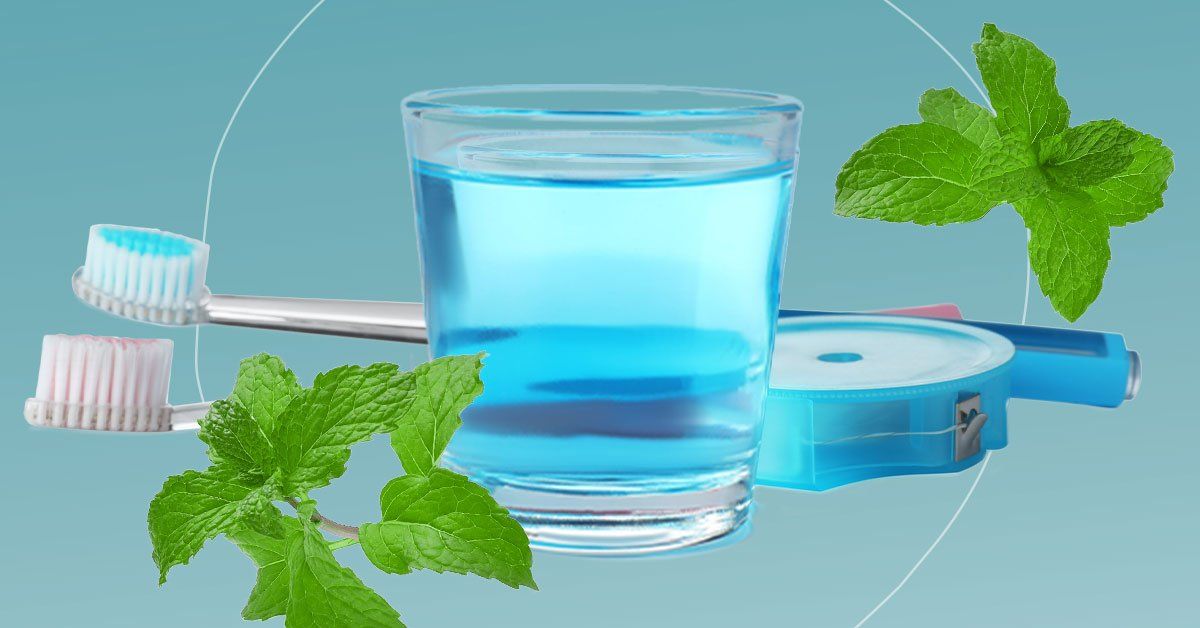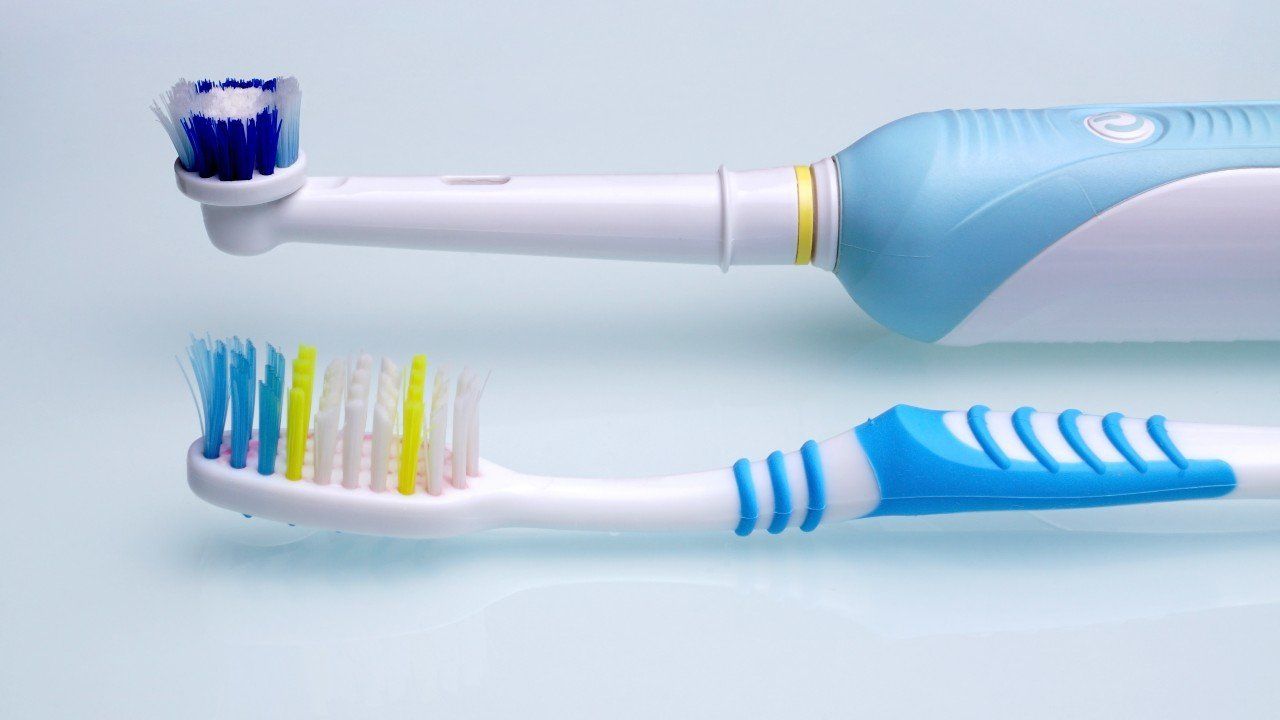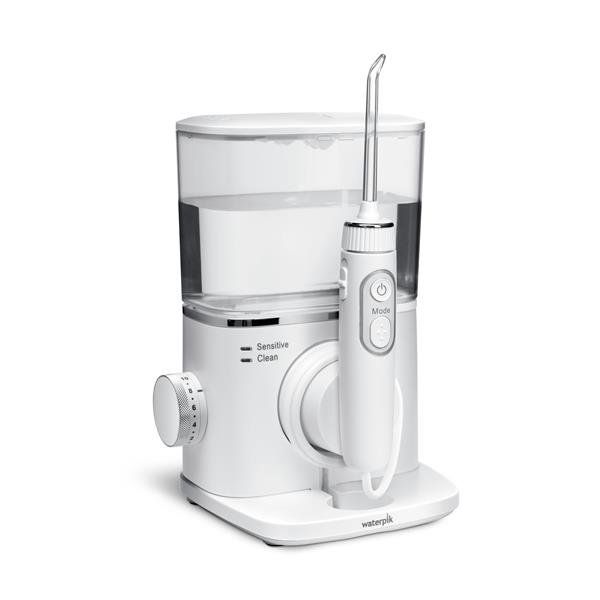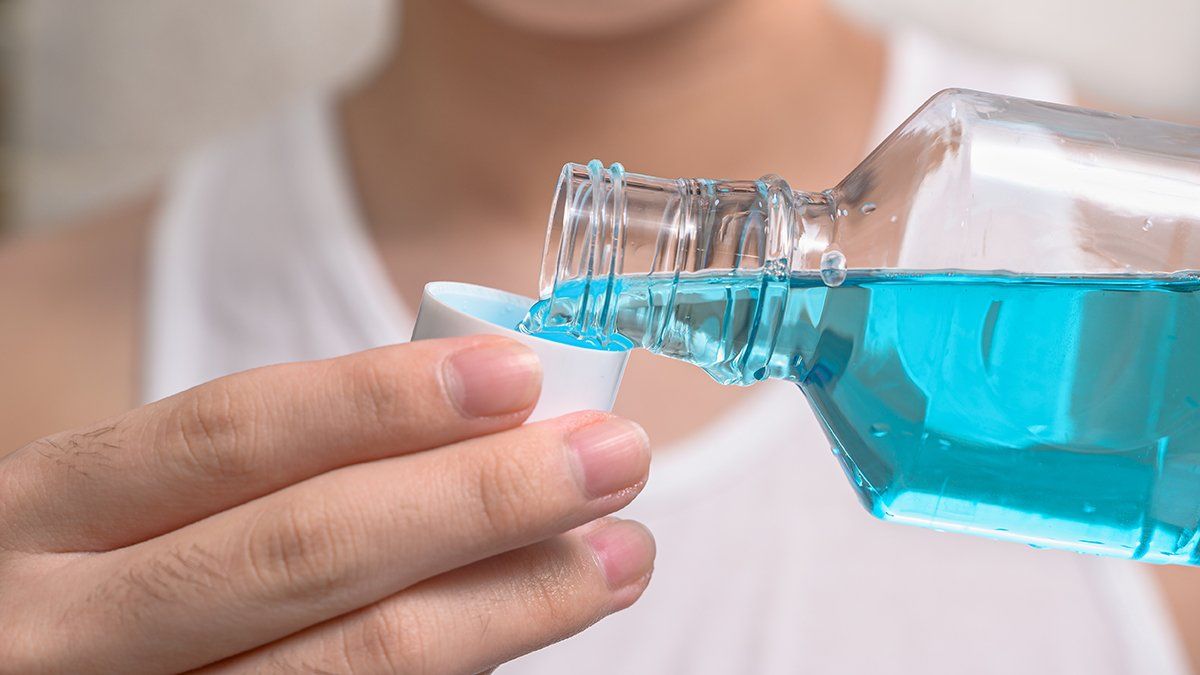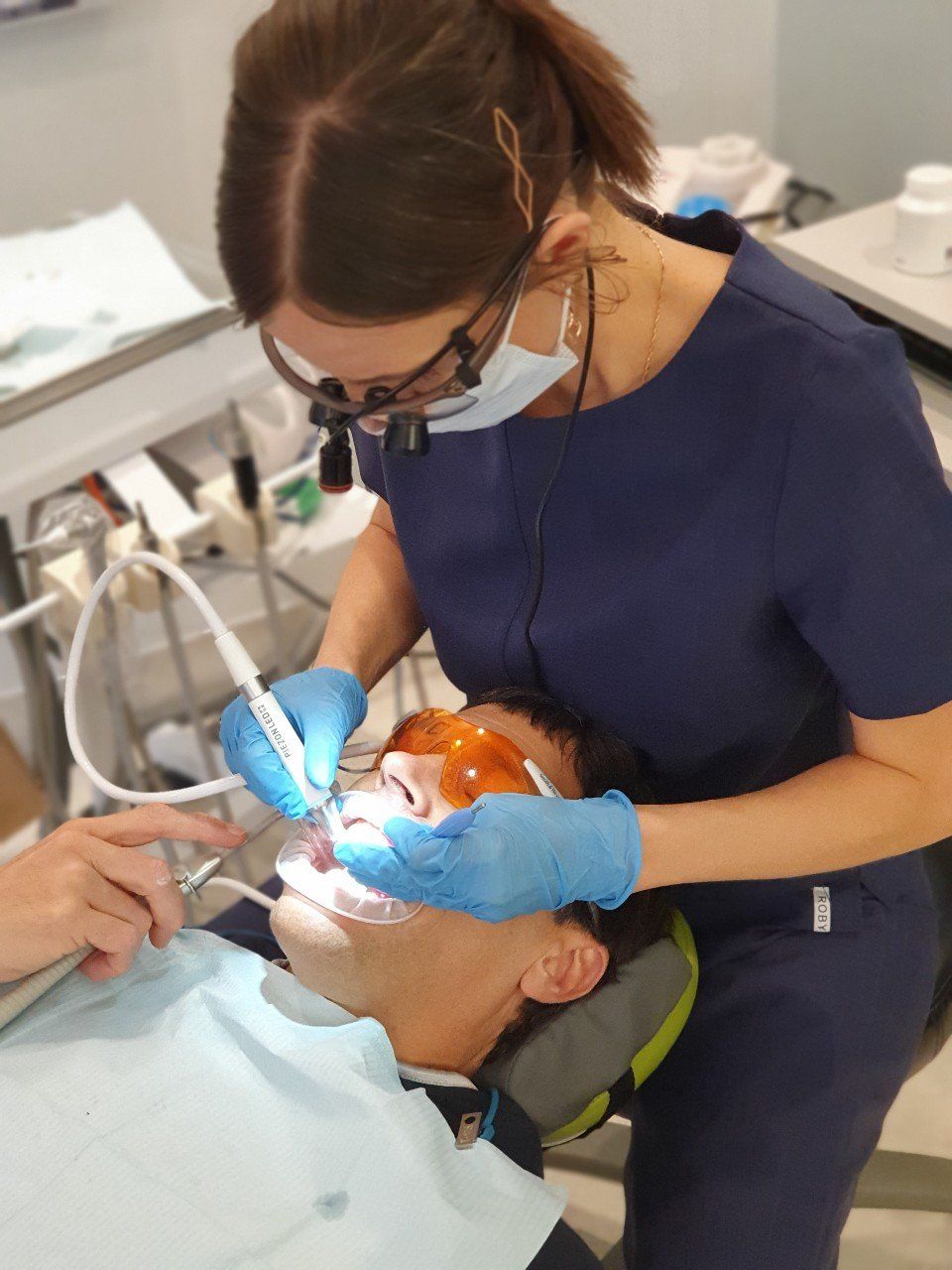HOW TO PREVENT & TREAT GUM DISEASE
The steps to treating gum disease are not rocket science, most people already know them. Putting them into regular practice is the challenge. Here are our top tips to prevent and treat gum disease.
1. Brush your teeth, preferably with an electric tooth brush
Remove the plaque with regular cleaning of your teeth at home. Tooth brushing should be done twice a day for 2 minutes each time. We love electric tooth brushes, as they do most of the work for you. They also have a timer which tell you when 2 minutes is up, so there is no cheating.
Electric tooth brushes are waterproof, so If you are having trouble brushing for 2 minutes, try brushing your teeth in the shower.
2. Clean in between your teeth
When you brush your teeth, you clean the outside, top and inside surfaces, but not the in-between ones. Proper care must include cleaning in between your teeth. This can be done with dental floss or tape, 'Reach' access flossers, wooden sticks, bristle brushes, or water flossers. This must be done once per day.
Water flossers are especially useful machines for people who struggle with floss or have difficult areas to clean such as under bridges, around implants or orthodontic braces.
3. Consider Using a Mouthwash
Mouthwashes are very helpful adjuncts for preventing and treating gum disease. They can help reduce the growth of plaque, swish away remaining food particles, and provide extra fluoride and antibacterial protection. However mouthwashes still need to be accompanied by daily brushing and flossing.
Our dentists and hygienists can recommend which mouthwash is best for your specific dental needs.
4. Have Regular Professional Treatment
Plaque above the gum line can be removed with regular brushing and flossing. However deep plaque or plaque that has hardened and formed calculus needs to be removed by a dentist or hygienist. We have some great technology to get teeth clean including AIRFLOW® therapy. Using AIRFLOW® and special instruments called scalers we can carefully scrape away the deposits without damaging the teeth. This usually takes only one visit. You may require more than one appointment if there is a lot of tartar to remove or the pockets are very deep.
Our hygienists will review your cleaning techniques to make sure you get the best possible results from your efforts at home. We also offer instruction on several different products which can help make homecare easier such as interdental brushes, tongue scrapers, electric tooth brushes and water flossers.
In very severe cases we will refer you to a periodontist (gum specialist) for more advanced treatment.
When you start regular flossing and brushing the gums may bleed and be sore. This is normal and will improve in 4-5 days so persevere!
Discover Dental

